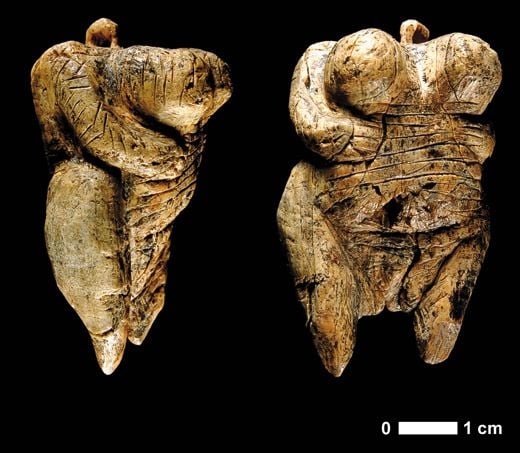From body art to cave art: Visual culture and the creative leap
A lecture by Prof. Paul Pettit, Durham University (Mercator Fellow RTG 1876)
This year's seminar about Cognitive Archaeology was
concluded with a lecture by Prof. Paul Pettitt at the Museum für Antike
Schifffahrt in Mainz. Between impressive models of Roman triremes, Prof. Pettit
enlightened us once more about The animal inside us all: Behavioral
evolution of Homo Sapiens and earliest art.
In a recap of what we had learned in the seminar, this
lecture was focused on the Paleolithic. When modern humans started roaming the
earth around half a million years ago, we developed large brains that cost lots
of energy to maintain, but allowing us for the first time to communicate in
symbols and imagine other worlds. When the first figurative art appeared during
the last Ice Age, prey animals were a favoured subject. They show the species
we shared our environment with: large herbivores, spotted horses and a
comically slipping cow, observations made in nature.
But more than that, hunter-gatherers depended on these
creatures for their sustenance, reflected in spearthrowers decorated with fauns
and birds. Caves held a special appeal - when approached without modern
lighting the shadow play of torches makes the horses seemingly fall out of
cracks, bison are dripping from the ceiling and ibex are ascending from the
sky. The natural landscape was reflected on this mysterious canvas of cracks and
crevices, making the imagination run wild. Caves represented a liminal space,
where this world could potentially meet others.
A development can be seen from 500.000 years ago, when
art focused on the body and its immediate surroundings, to 100.000 years ago,
when 'art' was transferred onto more portable objects in an act of social
display, such as figurines carved from mammoth ivory. From 40.000 years ago
this culminates in art projected onto the landscape in the form of cave art.
Around 32.000 years ago, cave art becomes more naturalistic and organized. The
shadow play on the walls is enhanced to form the shapes of bison and horses,
evoking movement in the low light of a flickering lamp. This effect is still
reached thousands of years later in the chiaroscuro technique of high relief,
which would immediately fall flat in the absence of shadows.
Symbols, being specific to space, time, cultural and
social context, are communicating one thing while meaning something else. But
when a 'structured deposition' of stones can be found near a tree, what does it
mean? Ritual action can be found among chimpanzees, throwing stones against a
tree for the sound of it, but also carrying around a dead child in an endearing
show of attachment. Ritualised behaviour is common among animals as a form of social
behavior, but without inherent meaning behind it. In humans, repeated behavior
(ranging from OCD to religion) is grounded in our need to live in a safe,
predictable, understandable world.
Our big brains developed in such a way that we became
masters at recognizing patterns. It was an evolutionary adaptation that allowed
us to recognize the good and the bad of an inherently chaotic world. Pareidolia
is the recognizing of patterns in nature, even when none are there. From an
evolutionary standpoint, it is better to be wrong once too often in
distinguishing leopards from tree branches. According to a cognitive
archaeology standpoint, this is why humans started picking up natural rocks
somewhat resembling the human body, modifying it to represent it more.
This focus on the human body can be found in
Neanderthal practices of ornamenting their body with black and red pigments and
feathers from predatory birds. Non-figurative Neanderthal cave art (from ca.
64.000 years ago) consist of hand stencils, dots and color washes, essentially
extending body art to the walls of caves. These expressions are often found on
and around cracks or in difficult, dangerous or uncomfortable to reach
positions, representing a meaningful exploration of the cave's topography.
In summary, Prof. Pettit painted the evolution of
visual culture from its origins on the body, extending outwards and becoming
more complex to become figurative art projected onto the environment, a
practice found in all of the (ancient) cultures under study by the RTG 1876.
Essentially a side product of our growing brains, visual culture allowed for
the unique creative leap from the body to the rich imaginary worlds shared by
humankind.
After the splendid lecture we enjoyed a bite and drink, and must thank Prof. Pettit for his engaging seminar and stimulating discussions throughout the semester!





Kommentare
Kommentar veröffentlichen